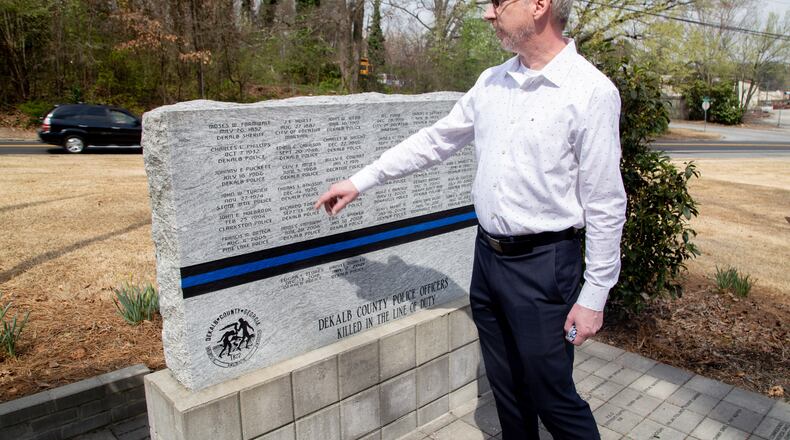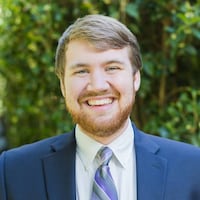Chamblee spent the past decade expanding its geographical footprint and annexing dozens of new neighborhoods into its borders, tripling its population in the process.
Once an industrial railroad stop known for its antique wares and international flair, the fast-changing city has transformed into one of DeKalb County’s largest and most diverse communities. City leaders are now evaluating the effects of that growth spurt, grappling with how to best meld “old Chamblee” with its new areas.
The city is trying to add a fourth City Council district to ensure someone who lives east of Buford Highway is among city leadership. Since the current City Council is all-white, activists hope the new seat will lead to a person of color being elected to represent the new district, which is more than half Hispanic.
“Even though we’re only talking two or three miles ... if you go from Peachtree Boulevard all the way to here (Buford Highway), it’s two completely different worlds,” said Lily Pabian, executive director of We Love BuHi, a nonprofit that documents immigrant stories from the area.
Some residents worry the city’s unique election method — where all residents vote for every district race regardless of where they live — might hinder a minority from being elected to City Council.
“You want your council to be reflective of your community, and I don’t see that in too many cities to be honest,” Councilman Brian Mock said. “It seems like us white guys seem to be the ones who run.”
Citywide voting districts
Chamblee residents vote for all council seats regardless of which district they called home. The district lines only limit who can run for the seat, not who votes.
Several Georgia cities have their councilmembers elected by all residents, but only one other city, Hapeville, has both at-large and district council seats that are elected citywide. For non-residents, the election system is confounding.
“My issues are not always going to be representative of what’s happening in other districts,” Pabian, who lives in Atlanta, said. “If you’re voting in someone else’s district, you may not have the insight. Is this the right candidate for that district?”
The unusual voting method could lead to a candidate getting the majority of votes within their district but losing due to votes from neighboring districts. City leaders argue that each councilmember represents the entire city and should have to care about what happens outside their handful of neighborhoods.
“Let’s be real, when you go out knocking on doors in your district, that’s all you’re going to do,” Mayor Eric Clarkson said. “But if you have to knock on doors all throughout the city, you’re going to learn different issues in other parts of the city.”
Chamblee currently has three councilmembers who each represent a distinct district along with two at-large council seats. Mock, whose seat is at-large, said the city began to rethink those district lines after the other at-large councilman, Darron Kusman, resigned last October before an ethics investigation got underway.
No current city leader lives in the city’s racially diverse southeastern areas, which were annexed in 2014. The annexation added 12,000 new residents to the city, bringing its population closer to 30,000.
The city used to be divided into five districts, but city officials said it was a challenge to get people to run for vacant council seats, which is why two districts were expanded to at-large seats.
“When you have a transient population, people just typically don’t want to run for office,” Clarkson said.
The eliminated districts were near Peachtree-DeKalb Airport and Buford Highway, which were predominantly populated by rental communities and immigrants. Pabian said those communities contribute to the corridor’s identity and backbone.
“When you use the word transient, it’s kind of like almost saying, ‘Well they don’t really count because they’re not going to stick around.,” Pabian said. “I would say there’s a false narrative there. These people are families, and they’re stakeholders.”
District demographics
The voting method also brings into question whether voters in less diverse parts of the city will support candidates of color if they choose to run.
“We have been a primarily white council, but quite frankly the areas and the neighborhood where people tend to run for office in Chamblee have been predominantly white,” Clarkson said.
According to a geographical and statistical analysis by The Atlanta Journal-Constitution, Districts 3 and 4 from the new map are 74% non-white. The northernmost District 2, which also has the highest median household income and lowest poverty rate, is the only majority white district in the city.
Todd Price is a former president of the Dresden East Civic Association, an organization that represents about eight neighborhoods that were part of the area annexed in 2014. He volunteers at Dresden Elementary School, which would be included District 4, and he said more than 95% of students are Hispanic.
He hopes someone from that community will run and gain traction from voters, but he’s skeptical that’ll become a reality anytime soon.
“Whether there will be any motivation for them to run for City Council remains to be seen, but I think that they definitely need some skin in the game there,” he said.
Mock, who was among the leaders who worked on the new map’s borders, said it might take a few election cycles before Chamblee’s leadership looks more like its constituents.
“I would love to see some diversity on council, but my feeling is it probably won’t happen this cycle,” Mock said. “I could be completely wrong, but folks are starting to raise their hand now that they’ve seen the map and say, ‘Hey I’m thinking about running,’ and the folks that are raising their hand are white guys.”
Credit: Steve Schaefer
Credit: Steve Schaefer
The new district
Mock, along with Clarkson and Sen. Sally Harrell, worked with the State Reappointment Office to create a new redistricted map. Using Census data, natural boundaries and existing neighborhoods, they split the city into four districts with roughly equal populations.
For the map to become official, it would have to make its way through the state Legislature and be signed by Gov. Brian Kemp. City leaders said they hope the new map will be approved ahead of November, so the new district can hold its election alongside races for mayor and the District 1 seat. The new district would replace the vacant at-large seat.
Mock said the lines could be redrawn in a year or two when the 2020 Census data becomes available.
“It’s a tricky game when you’re playing with 10-year-old data,” he said, adding that current elected officials couldn’t be drawn out of their districts. “I’m comfortable that it is the best map that we could come out with.”
Residents in the new District 4 are mostly happy with the proposed map, but some complained about where lines were drawn. Elmer Veith, who would become a resident of the new district, said a few neighborhoods were split up, which city leaders said they would try to avoid. He wondered why Buford Highway is divided among three districts as well.
“There’s a lot to be said when you’ve got a big honking road in the middle of things,” he said. “Buford Highway is a pretty natural dividing line.”
Credit: City of Chamblee
Credit: City of Chamblee
Price said he can’t see a negative to neighborhoods, such as Wakefield Forest, being caught between two districts, since every councilmember runs at-large campaigns anyway.
“I can’t imagine a scenario where having two City Council members represent Wakefield Forest, which is a large community of roughly 450 homes, would be detrimental to us as a community,” he said.
Harrell is sponsoring the bill that would formalize the four districts. City leaders also adopted a resolution Tuesday to affirm their support of the new map.
“I think it’ll make the council stronger,” Clarkson said. “It’s great to have different perspectives from around the city, but it’s also incumbent on our city officials to know everything that’s going on in our city regardless of whether its in your district or not.”
— AJC data specialist Jennifer Peebles contributed to this article.
About the Author
The Latest
Featured




